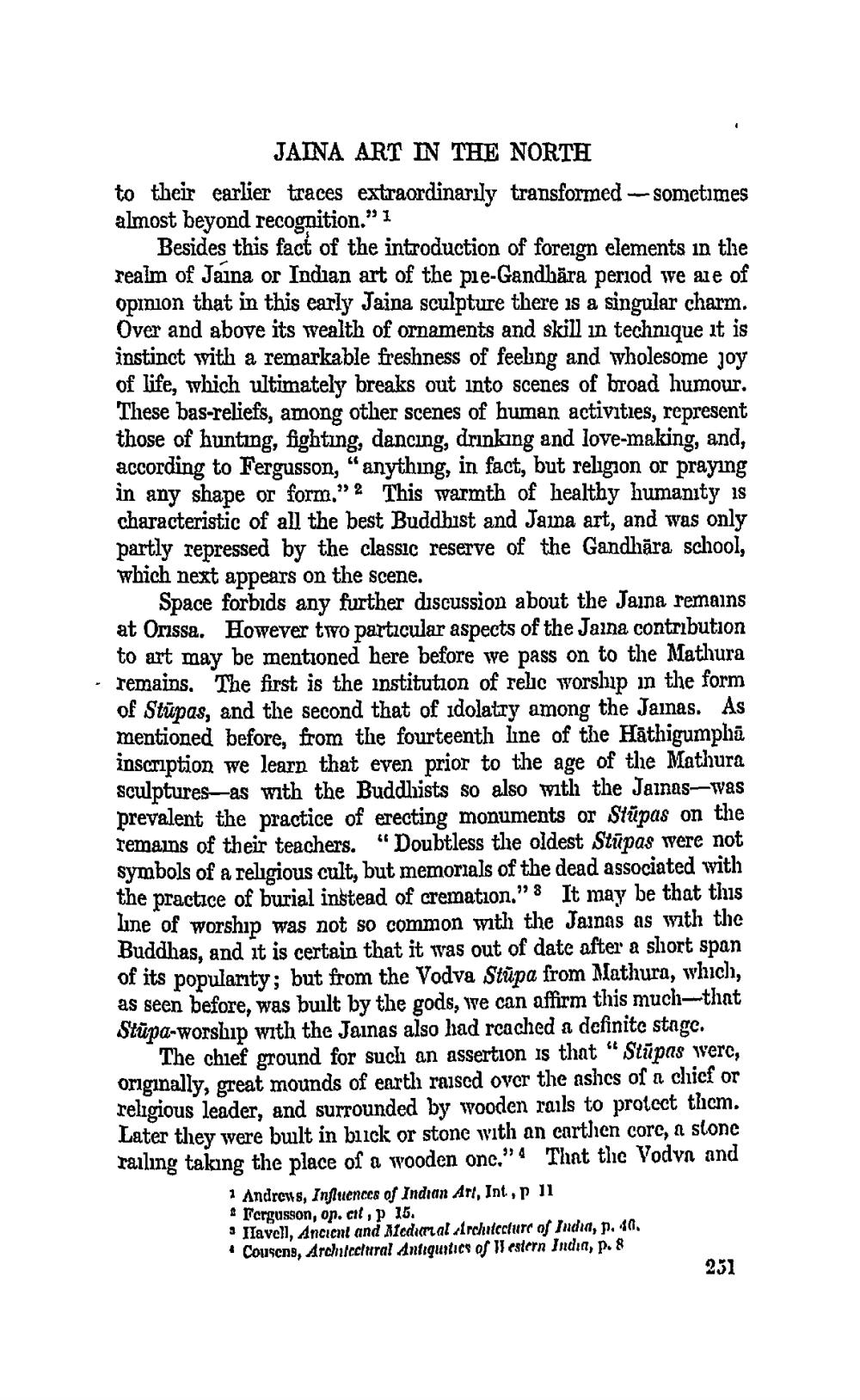________________ JAINA ART IN THE NORTH to their earlier traces extraordinarily transformed sometimes almost beyond recognition." 1 Besides this fact of the introduction of foreign elements in the realm of Jaina or Indian art of the pre-Gandhara period we are of opinion that in this early Jaina sculpture there is a singular charm. Over and above its wealth of ornaments and skill in technique it is instinct with a remarkable freshness of feeling and wholesome joy of life, which ultimately breaks out into scenes of broad humour. These bas-reliefs, among other scenes of human activities, represent those of hunting, fighting, dancing, drinking and love-making, and, according to Fergusson, "anything, in fact, but religion or praying in any shape or form," 2 This warmth of healthy humanity is characteristic of all the best Buddhist and Jama art, and was only partly repressed by the classic reserve of the Gandhara school, which next appears on the scene. Space forbids any further discussion about the Jaina remains at Orissa. However two particular aspects of the Jaina contribution to art may be mentioned here before we pass on to the Mathura - remains. The first is the institution of relic worship in the form of Stupas, and the second that of idolatry among the Jainas. As mentioned before, from the fourteenth line of the Hathigumpha inscription we learn that even prior to the age of the Mathura sculptures--as with the Buddhists so also with the Jainas--Was prevalent the practice of erecting monuments or Stupas on the remains of their teachers. "Doubtless the oldest Stupas were not symbols of a religious cult, but memorials of the dead associated with the practice of burial instead of cremation." 3 It may be that this line of worship was not so common with the Jamas as with the Buddhas, and it is certain that it was out of date after a short span of its popularity; but from the Vodva Stupa from Mathura, which, as seen before, was built by the gods, we can affirm this much-that Stupa-worship with the Jainas also had reached a definite stage. The chief ground for such an assertion is that "Stipas werc, originally, great mounds of earth raised over the ashes of a chicf or religious leader, and surrounded by wooden rails to protect them. Later they were built in buck or stone with an carthen core, a stone railing taking the place of a wooden onc.!! That the Vodyn and 1 Andreus, Influences of Indian Art, Int, p 11 - Fergusson, or.cit, p 15. - Ilavell, Ancient and Asediaal Architecture of India, p. 40, * Couseng, Architeenral Antiquities of 11 estern India, p. 8 251




